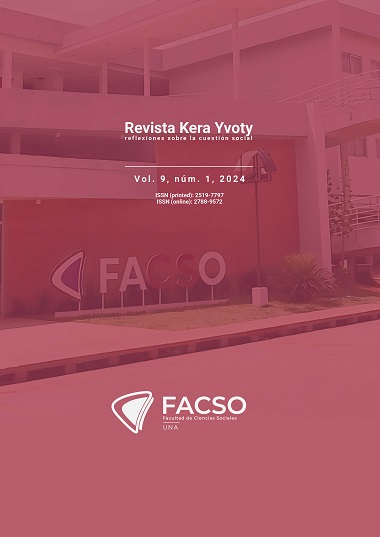Abstract
The objective of this scientific article is to analyze the impact of corruption and organized crime on the current configuration of Paraguay, through a comparative study based on two reports: the Capacity to Combat Corruption Index (CCC) 2023 and the Global Organized Crime Index 2023. Using a methodology of documentary and comparative analysis, the findings of both reports are examined, identifying the interrelationships between these phenomena and their social, political, and economic implications. The results reveal that, although Paraguay has made progress in terms of transparency, international cooperation, and anti-corruption policies, serious problems persist that undermine democratic institutions and the rule of law. Systemic corruption, impunity, and the penetration of criminal actors into state structures create a highly complex scenario. The article concludes on the need to strengthen the integrity and independence of the branches of government, promote a culture of legality and public ethics, and articulate comprehensive actions that involve civil society and the private sector in the fight against corruption and organized crime.
References
Acemoglu, D., y Robinson, J. (2012). Why nations fail: The origins of power, prosperity, and poverty. Crown Business.
Bailey, J., y Taylor, M. (2009). Evade, corrupt, or confront? Organized crime and the state in Brazil and Mexico. Journal of Politics in Latin America, 1(2), 3-29.
Bovierro, P. (2002). Organized crime and institutional quality. University of California, San Diego.
Control Risks. (2023). Índice de Capacidad para Combatir la Corrupción (CCC) 2023. Control Risks Group Limited.
Duarte, R. (2022). Paraguay: entre la corrupción y el crimen organizado. Análisis Carolina, (35), 1-14.
Gambetta, D. (1993). The Sicilian Mafia: the business of private protection. Harvard University Press.
Garay-Salamanca, L. J., y Salcedo-Albarán, E. (2012). Narcotráfico, corrupción y Estados: cómo las redes ilícitas han reconfigurado las instituciones en Colombia, Guatemala y México. Debate.
Husted, B. (1999). Wealth, culture, and corruption. Journal of International Business Studies, 30(2), 339-359.
Mauro, P. (1995). Corruption and growth. The Quarterly Journal of Economics, 110(3), 681-712.
Méon, P., y Sekkat, K. (2005). Does corruption grease or sand the wheels of growth? Public Choice, 122, 69-97.
Moriconi, M., y Peris, C. (2019) Merging legality with illegality in Paraguay: the cluster of order in Pedro Juan Caballero, Third World Quarterly, 40(12), 2210-2227. https://doi.org/10.1080/01436597.2019.1636225
Nagle, L. (2002). The Challenges of fighting global organized crime in Latin America. Fordham International Law Journal, 26(6), 1649-1715.
Naím, M. (2006). Illicit: How smugglers, traffickers and copycats are hijacking the global economy. Doubleday.
Global Initiative Against Transnational Organized Crime. (2023). Índice Global de Crimen Organizado 2023. Global Initiative Against Transnational Organized Crime.
Peris, C. (2024). El dilema del Estado en el cultivo de marihuana en Paraguay: percepciones de una comunidad cultivadora de cannabis sobre la policía y lo legal e ilegal. e-l@tina. Revista electronica de Estudios Latinoamericanos, 22(86).
Perz, A. (2023). Corruption and organized crime: two sides of the same coin? International Journal of Law, Crime and Justice, 38(2), 34-51.
Rojas Aravena, F. (2006). El crimen organizado internacional: una grave amenaza a la democracia en América Latina y el Caribe. FLACSO.
Rose-Ackerman, S., y Palifka, B. (2006). Corruption and government: Causes, consequences, and reform. Cambridge University Press.
Salgado, E. (2013). The cultural roots of corruption: An ethical investigation. Peter Lang.
Schelling, T. (1971). What is the business of organized crime? Journal of Public Law, 20, 71-84.
Seligson, M. (2002). The impact of corruption on regime legitimacy: A comparative study of four Latin American countries. Journal of Politics, 64(2), 408-433.
Transparency International. (2021). Corruption Perceptions Index 2021. Transparency International.
UNODC. (2021). Global Report on Corruption. United Nations Office on Drugs and Crime.
Wagley, J. (2006). Transnational organized crime: Principal threats and US responses. Congressional Research Service, Library of Congress.
Warren, M. (2004). What does corruption mean in a democracy? American Journal of Political Science, 48(2), 328-343.

This work is licensed under a Creative Commons Attribution 4.0 International License.
Copyright (c) 2024 Carlos Peris




